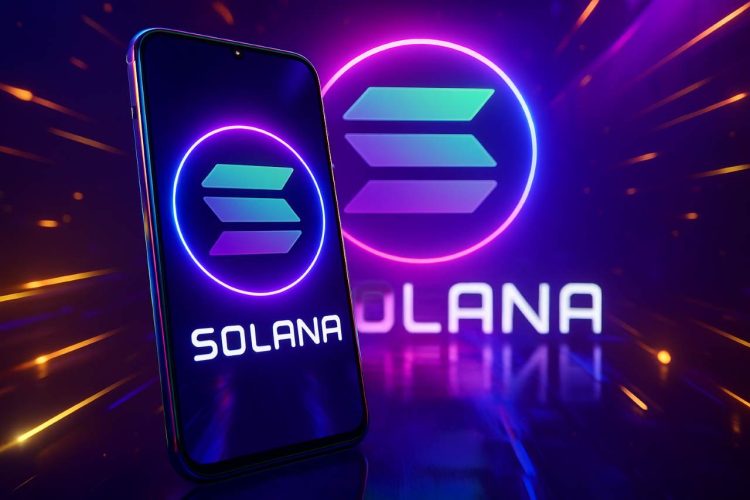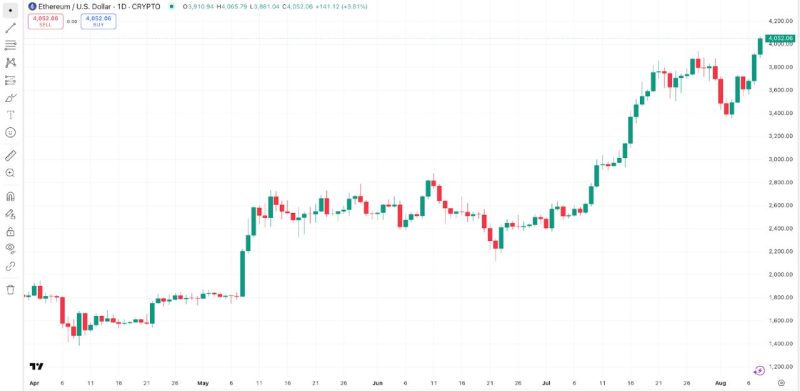Solana pursues the mission to make cryptocurrencies a part of everyday life with the introduction of a new, crypto-friendly smartphone: the Seeker Chapter 2. Whereas the first model — Saga 1 — was produced in limited quantities of 20,000 units, this new version is set for a far broader, international audience.

A crypto smartphone designed for everyday use
The Saga Chapter 2 (Seeker) was created by Solana Mobile to give an integrated, accessible Web3 experience that retains all the modern smartphone features we can expect from an Android device. Solana continues trying to gain traction as the Ethereum price approaches $4,800.

The device has native tools built in for cryptocurrency users, like a Seed Vault, somewhat of a hardware safe, where you can securely store the recovery phrases (seed phrases) for crypto wallets.
It also incorporates Solana Pay, which enables users to transact in cryptocurrency directly from their smart devices. Additionally, there is a dApps Store, a decentralized application store that operates independently of Google Play.
This freedom enables the Solana blockchain to avoid some of the restrictions that the big mobile platforms impose on apps related to cryptocurrencies. Additionally, Solana makes software development kits available to developers to help them create apps that run in the Solana ecosystem. Together, these factors contribute to a favorable Solana price forecast in the near future.
International opening: a strategic shift
The initial version — the Saga — was marketed exclusively to consumers in the U.S., but Solana Mobile’s latest offering, the Seeker, has gone global. The pre-order system for the Saga Chapter 2 is open regardless of their location.
The release of the first Saga smartphone in 2023 raised high expectations, but the commercial outcomes proved disappointing. Even with solid technical performance and cutting-edge Web3 integration, early sales were dismal.
It wasn’t until the announcement of a token airdrop and the distribution of special NFTs to phone users that people really started noticing the product. This unexpected enthusiasm, driven more by speculation than actual device experience, highlighted flaws in the original strategy.
Still, Solana learned something from this episode: with Seeker, it now aims for real, working usefulness instead of simple hype.
Meanwhile, third-party developers are working to bring all sorts of interesting solutions to the phone. Given the growing alternative blockchain landscape, multi-blockchain integration is a potential future enhancement for the phone.
Shipping to more than 50 countries, Solana’s plan to attract new users, especially in regions like Africa, Latin America, and Southeast Asia is clear. Its strategy hinges on delivering computing power at low fees, enabling decentralized applications and services to run on its blockchain.
Additionally, the phone’s cost has been lowered. Now offered at approximately $450 to $500, it seeks to position itself as far more competitive than the previous model, which launched at nearly $1,000.
This new approach aims to transform the crypto smartphone from a niche gadget into something accessible and universal, a technological tool that millions of people can utilize as a mobile entry point into the blockchain ecosystem. And it seems to be off to a good start, as approximately 150,000 units have reportedly been pre-ordered.
The Saga’s Second Chance
In this second launch, Solana Mobile aims to convert the smartphone into a genuinely secure digital wallet. This could advance mobile Web3 — still a relatively unexplored frontier despite the cryptocurrency boom — toward the widespread adoption that its developers hope for.
The Saga Chapter 2 embodies a merger of blockchain technology and mobile functionality. With its global reach and refined approach, this smartphone has the potential to become Web3’s first genuine mass-market success.
